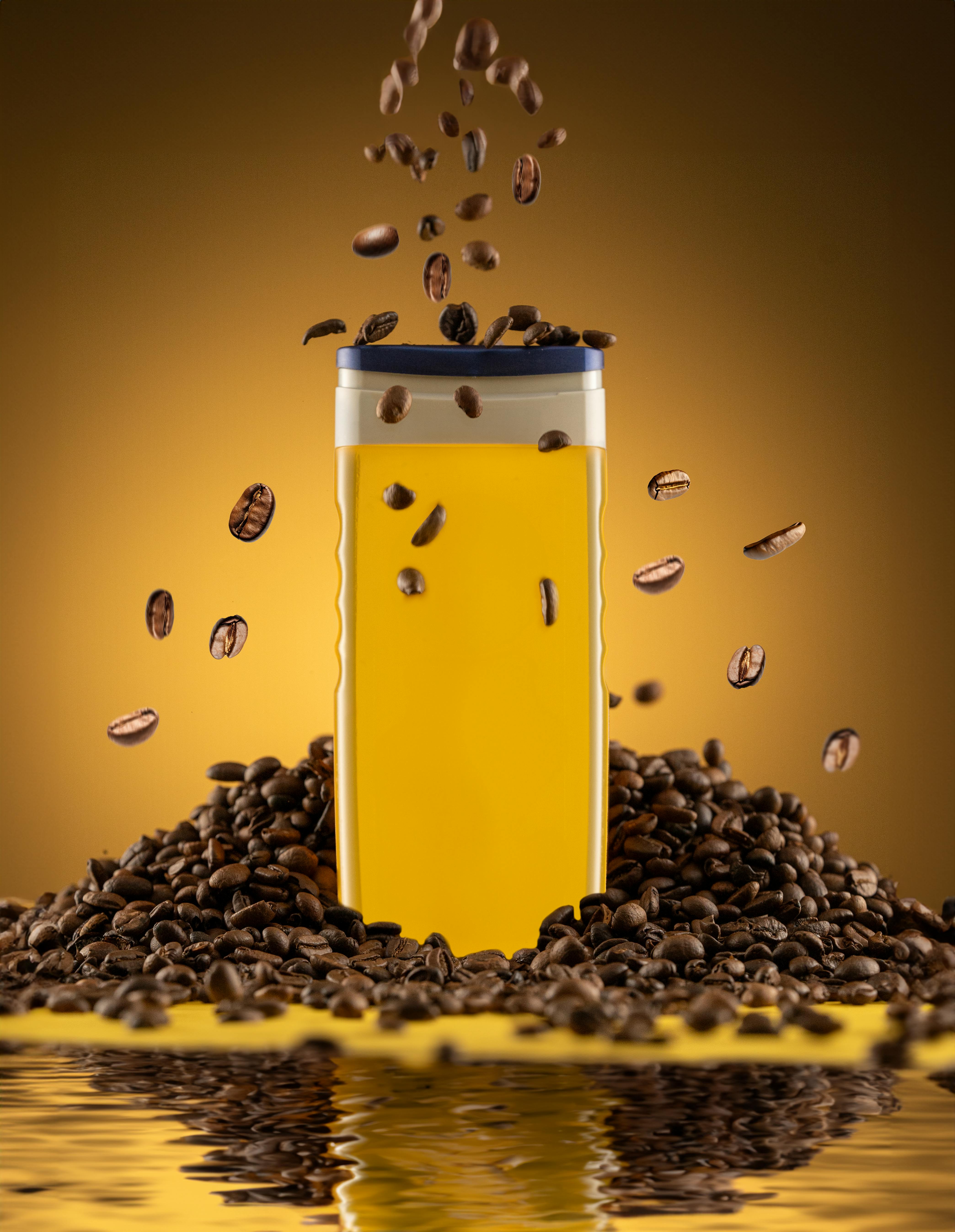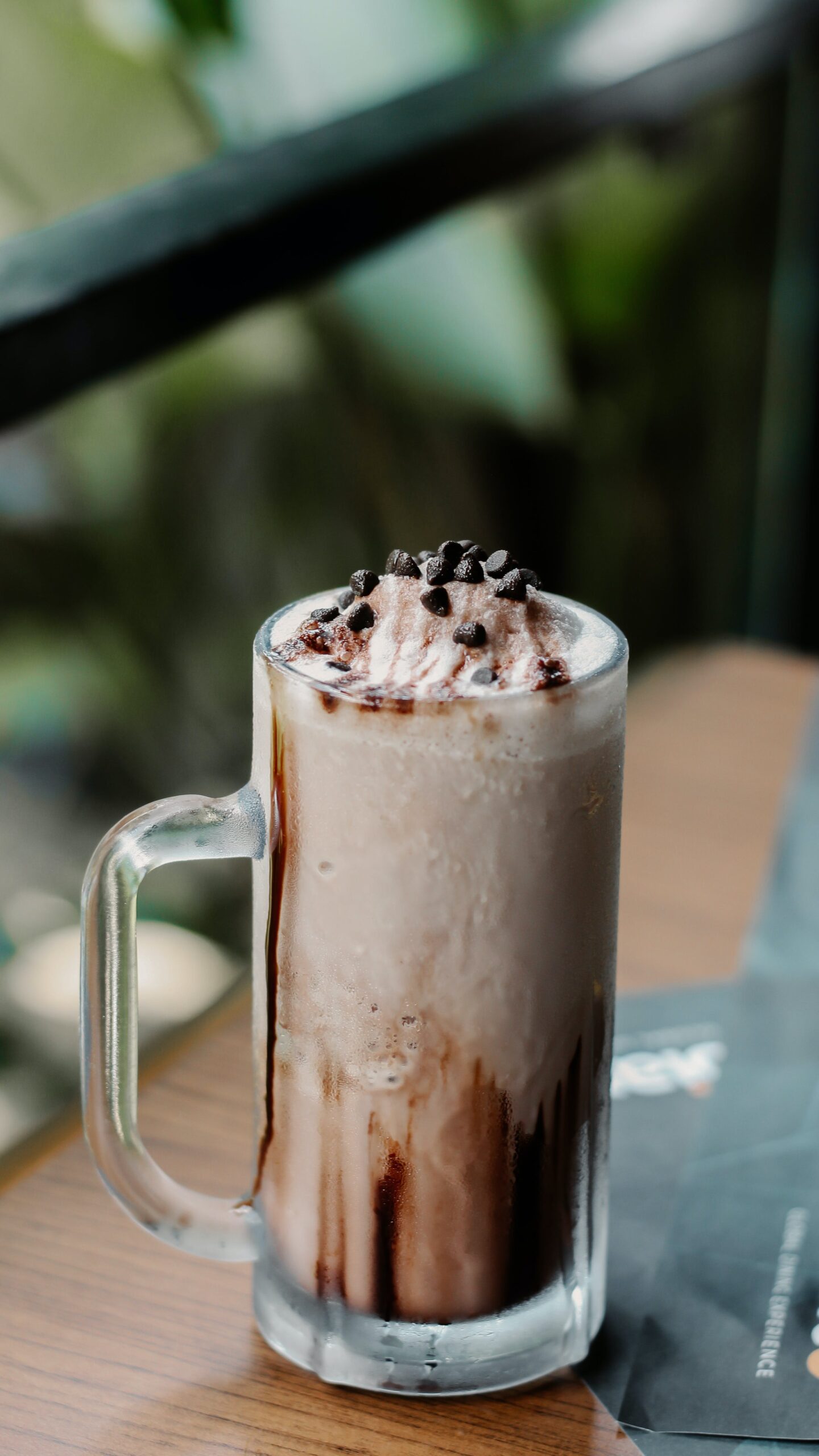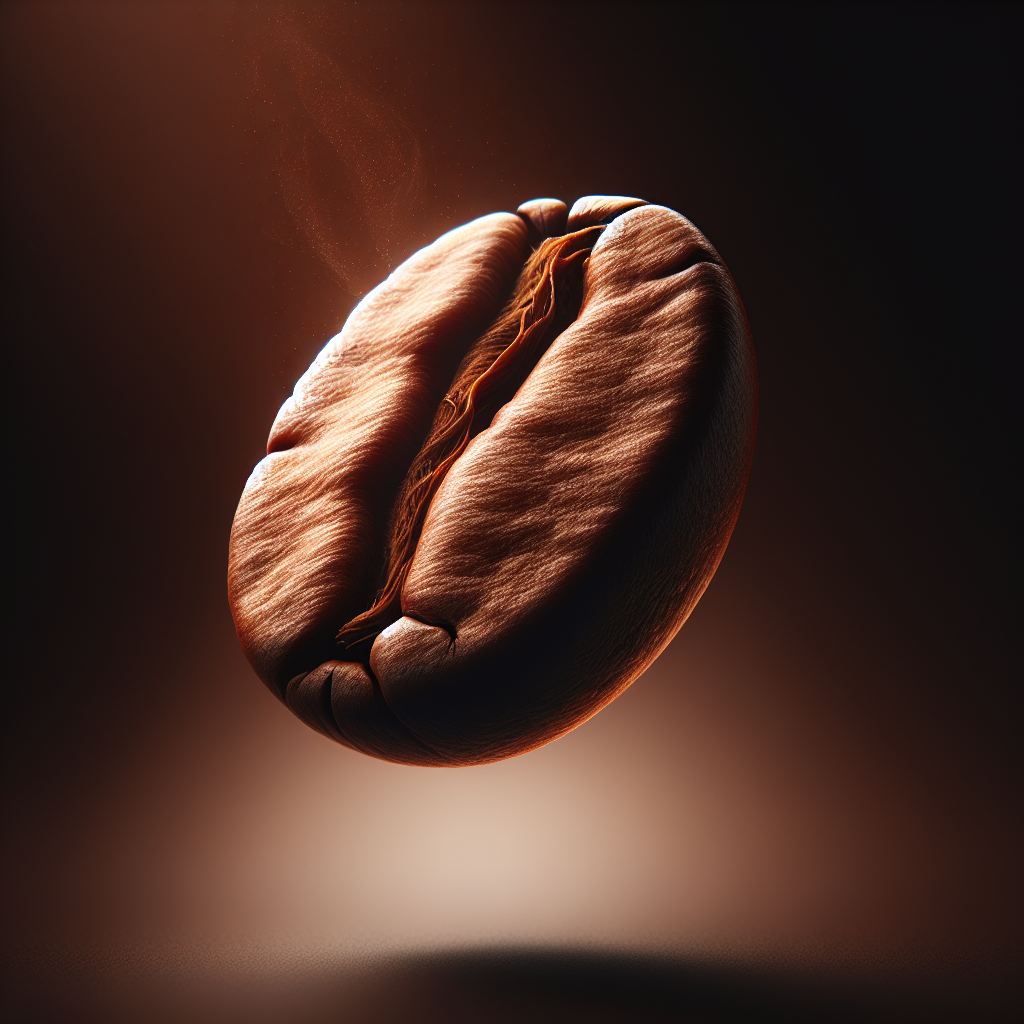At HopaCoffee.com, we strive to ignite your passion for coffee by providing an unparalleled selection of premium blends and flavors. From invigorating your mornings to satisfying your deepest coffee cravings, we are here to enhance your coffee experience. As coffee enthusiasts ourselves, we understand that great coffee is more than just a beverage – it’s an art form. That’s why we’re excited to take you on a journey into the world of coffee extraction. Together, let’s unravel the fascinating chemistry behind the brewing process and unlock the secrets of creating the perfect cup of coffee. Join us as we embark on a delightful exploration of Coffee Essentials for the true coffee lover.

The Basics of Coffee Extraction
What is coffee extraction?
Coffee extraction refers to the process of removing soluble compounds, flavors, and aromatic oils from coffee grounds using water. It is the process that transforms the dry coffee grounds into a flavorful and aromatic beverage. During extraction, water molecules interact with the coffee grounds, dissolving and carrying away various compounds from the coffee beans.
Why is coffee extraction important?
Coffee extraction is crucial because it determines the flavor, strength, and aroma of the brewed coffee. Extracting the right balance of compounds from the coffee grounds results in a well-rounded, delicious cup of coffee. Insufficient extraction leads to under-extracted coffee, which tastes weak and lacks flavor, while over-extraction produces bitter and unpleasant flavors.
The factors that affect coffee extraction
Several factors can affect the coffee extraction process: the grind size, water temperature, brew time, water-to-coffee ratio, and brewing method. Each factor plays a role in how quickly or slowly the water extracts the desired flavors and compounds from the coffee grounds.
The ideal coffee extraction
The ideal coffee extraction is one that achieves a balanced and flavorful cup of coffee. It strikes the perfect balance between acidity, sweetness, and bitterness, resulting in a pleasant and enjoyable taste. The exact parameters for the ideal coffee extraction can vary depending on personal preferences, the type of coffee, and the brewing method used.
The Brewing Process
The role of water in coffee extraction
Water is the primary solvent in coffee extraction. Its main role is to dissolve and extract the soluble compounds from the coffee grounds. The temperature and quality of the water used significantly impact the extraction process. Hot water enhances the extraction, while cold water extracts less.
Different brewing methods
There are various brewing methods, each offering a unique way to extract coffee. Some popular methods include pour-over, French press, espresso, Aeropress, and cold brew. Each brewing method has its own set of parameters, such as water temperature, brew time, and water-to-coffee ratio, that influence the extraction process.
The impact of temperature and time
Both temperature and time play crucial roles in coffee extraction. The water temperature affects the rate at which compounds are extracted. Hotter water extracts quicker, while cooler water extracts slower. The brew time also determines the level of extraction. Longer brew times generally lead to more extraction, but there is a point where over-extraction occurs, resulting in bitterness.
Grind size and its effect on extraction
The grind size of the coffee grounds directly affects the surface area exposed to water, and thus the extraction process. Finely ground coffee extracts more quickly, while coarsely ground coffee extracts more slowly. The choice of grind size depends on the brewing method and personal preference.

Chemical Reactions in Coffee Extraction
The role of solubility
Solubility refers to the ability of a compound to dissolve in a particular solvent, such as water. In coffee extraction, soluble compounds like acids, sugars, oils, and various chemical compounds dissolve in water, contributing to the flavor and aroma of the final brewed coffee.
Extraction of acids and oils
During extraction, acids and oils are extracted from the coffee grounds. Acids contribute to the brightness and acidity of the coffee, while oils add to its body and mouthfeel. The extraction process is responsible for balancing these components, resulting in a well-rounded and enjoyable cup of coffee.
The Maillard reaction
The Maillard reaction is a chemical reaction that occurs during coffee extraction. It involves the reaction between amino acids and sugars when exposed to heat, resulting in the browning and caramelization of the coffee beans. This reaction contributes to the complexity of flavors and aromas in coffee, creating desirable characteristics such as chocolate and nutty notes.
The role of carbon dioxide
Carbon dioxide is naturally present in coffee beans and is released during the brewing process. It plays a role in extraction by physically aiding the extraction process. The release of carbon dioxide creates agitation and helps to distribute water evenly throughout the coffee bed, enhancing extraction efficiency.
Acids in Coffee
Types of acids in coffee
Coffee contains a variety of acids, including malic acid, citric acid, acetic acid, and quinic acid. Each acid contributes to the overall flavor profile of coffee and provides unique characteristics. The type and concentration of acids present in coffee can vary depending on factors like coffee variety, origin, and roast level.
The impact of acidity on flavor
Acidity in coffee is a desirable characteristic that adds brightness and liveliness to the flavor profile. Acidity provides a pleasant tartness, enhances fruit flavors, and contributes to the overall complexity and balance of the coffee. However, excessive acidity can lead to sourness, so achieving the right balance is crucial.
Measuring acidity in coffee
Acidity in coffee can be measured using pH, titratable acidity, or flavor analysis. pH measures the concentration of hydrogen ions in a substance, while titratable acidity determines the total acid content by neutralizing the coffee sample with a base. Flavor analysis involves sensory evaluation to determine the perceived acidity in a cup of coffee.

Oils in Coffee
The presence of oils in coffee
Coffee beans contain natural oils that are released during the extraction process. These oils contribute to the overall flavor, body, and mouthfeel of the brewed coffee. The presence of oils can be seen as a shiny film on the surface of a freshly brewed cup or as oily residue in espresso.
The role of oils in flavor
Oils in coffee carry aromatic compounds that add complexity and intensity to the flavor profile. They contribute to the richness and depth of flavors, as well as enhancing the overall aromatic experience of the coffee. The extraction of oils during brewing is essential for achieving a full-bodied and flavorful cup.
The impact on mouthfeel
The presence of oils in coffee affects its mouthfeel, or the way it feels on the tongue and palate. Oils contribute to the perceived viscosity and texture of the coffee, giving it a smooth and creamy mouthfeel. The extraction of oils is vital in achieving the desired body and mouthfeel in a cup of coffee.
The Maillard Reaction
What is the Maillard reaction?
The Maillard reaction is a complex chemical reaction that occurs between amino acids and reducing sugars when exposed to heat. This reaction is responsible for the browning and caramelization of many foods, including coffee. It generates a wide range of flavors and aromas, such as roasted, nutty, and caramel notes.
The role of amino acids and sugars
Amino acids and reducing sugars are essential components for the Maillard reaction to occur in coffee. Amino acids, which come from the breakdown of proteins, react with reducing sugars, like glucose and fructose, to produce a cascade of chemical reactions, resulting in the formation of new compounds that contribute to the flavor and aroma of the coffee.
The impact on aroma and flavor
The Maillard reaction is responsible for creating a wide range of desirable flavors and aromas in coffee. It produces compounds that contribute to the complexity and depth of coffee flavors, such as chocolate, caramel, and toasted nut notes. The Maillard reaction plays a significant role in developing the unique flavors we associate with a good cup of coffee.
Managing the Maillard reaction
Controlling the Maillard reaction is crucial to achieve the desired flavors and avoid undesirable characteristics, such as burnt or bitter flavors. Factors like temperature, time, and roast level influence the Maillard reaction. The skillful management of these variables allows roasters and baristas to create a desired flavor profile in their coffee.
Extraction Methods and Variables
Percolation vs. immersion
There are two primary methods of coffee extraction: percolation and immersion. Percolation involves water passing through a bed of coffee grounds, as seen in pour-over and drip brewing. Immersion involves coffee grounds steeping in water for a certain period, like in French press and cold brew. Each method results in different extraction characteristics and flavor profiles.
Brewing variables and their impact
Various brewing variables impact coffee extraction, including water temperature, brew time, water-to-coffee ratio, agitation, and filtration. Each variable affects the rate and level of extraction, influencing the flavors, aromas, and strength of the brewed coffee. Understanding and controlling these variables allow coffee enthusiasts to tailor the extraction to their preferences.
The effect of water-to-coffee ratio
The water-to-coffee ratio refers to the amount of water used in proportion to the weight of coffee grounds. A higher ratio generally leads to a stronger extraction, while a lower ratio results in a milder cup. Adjusting the water-to-coffee ratio allows for customization of the strength and flavor intensity of the brewed coffee.
Grind size and extraction
The size of the coffee grounds affects the surface area exposed to water and, therefore, the extraction rate. Finer grind sizes increase the extraction rate, while coarser grind sizes decrease it. Choosing the appropriate grind size according to the brewing method and desired extraction level is crucial for achieving the desired flavors and balance in the cup.
Over and Under Extraction
Understanding over-extraction
Over-extraction occurs when coffee is brewed for too long or with water that is too hot. It occurs when the solubles in the coffee grounds are overly extracted, resulting in bitter and unpleasant flavors. Over-extracted coffee may also exhibit astringency and dryness due to the increased extraction of undesirable compounds.
Identifying under-extraction
Under-extraction happens when coffee is not brewed long enough or with water that is too cool. It occurs when the desired flavors and compounds are not adequately extracted from the coffee grounds. Under-extracted coffee tends to taste weak, lacks complexity and body, and may exhibit sour or acidic notes without balance.
The impact on flavor and balance
Both over and under-extracted coffee can negatively impact the flavor and balance of the brewed cup. Over-extracted coffee can be excessively bitter, while under-extracted coffee may taste weak and lacking in flavor. Achieving the right level of extraction is essential for a well-balanced and enjoyable coffee experience.
Preventing over and under extraction
To prevent over and under extraction, it is important to carefully control brewing variables such as water temperature, brew time, and grind size. Adjusting these variables according to personal preferences, coffee type, and brewing method can help achieve an optimal extraction and avoid the negative effects of over and under extraction.
The Science of Espresso
The unique extraction process of espresso
Espresso is a brewing method that utilizes high pressure and finely ground coffee to extract coffee quickly and intensively. The high pressure in espresso machines forces hot water through tightly packed coffee grounds, resulting in a concentrated, full-bodied, and flavorful shot of coffee with a layer of crema on top.
The impact of pressure on extraction
The pressure in espresso machines plays a crucial role in extracting coffee. It helps to overcome resistance and extract a higher concentration of compounds from the coffee grounds. The pressure also emulsifies oils, enhances the extraction of aromatic compounds, and contributes to the distinct characteristics of espresso.
Dialing in espresso
Dialing in espresso refers to the process of adjusting brewing variables to achieve the desired flavor profile. Baristas carefully control parameters such as grind size, dose, brew time, and water temperature to optimize extraction and balance the flavors. The art of dialing in espresso requires experience, skill, and a deep understanding of the brewing process.
The flavor profile of espresso
Espresso is known for its intense flavor profile, characterized by a concentrated and robust taste. It often exhibits bittersweet flavors, rich body, and a velvety mouthfeel. The unique extraction process of espresso, combined with the Maillard reaction and emulsification of oils, contributes to its distinct and complex flavor profile.
The Art and Science of Brewing
Finding the perfect extraction
Finding the perfect extraction is a combination of art and science. It involves experimenting with various brewing variables, such as water temperature, grind size, brew time, and water-to-coffee ratio, to achieve the desired flavor profile. The perfect extraction is subjective and varies according to individual preferences and the characteristics of the coffee being brewed.
Experimenting with brewing variables
Coffee brewing is a journey of exploration and experimentation. Brewing enthusiasts can experiment with different brewing variables to uncover new flavors and develop their own unique brewing methods. By adjusting variables such as water temperature, grind size, and brew time, coffee lovers can discover new dimensions of flavor and aroma in their brewed coffee.
Developing a personal brewing method
Developing a personal brewing method involves refining one’s brewing technique to consistently produce a cup of coffee that matches individual preferences. It requires understanding the impact of each brewing variable and fine-tuning them to achieve a personalized flavor profile. With practice and experimentation, a personal brewing method can be developed and enjoyed.
Continued learning and exploration
The world of coffee brewing is vast and ever-evolving. There is always something new to learn and discover. Coffee enthusiasts can continue to expand their knowledge through tasting different coffee varieties, exploring new brewing methods, and staying up to date with the latest research and techniques. By embracing the art and science of brewing, the journey of coffee exploration never ends.
In conclusion, understanding the basics of coffee extraction, the chemical reactions involved, and the impact of variables and methods allows coffee lovers to explore and appreciate the intricacies of brewing. By honing their skills, experimenting with different factors, and appreciating the unique flavors and aromas that coffee extraction offers, individuals can truly elevate their coffee experience. So grab a cup of your favorite brew, dive in, and let the journey of coffee exploration begin!

